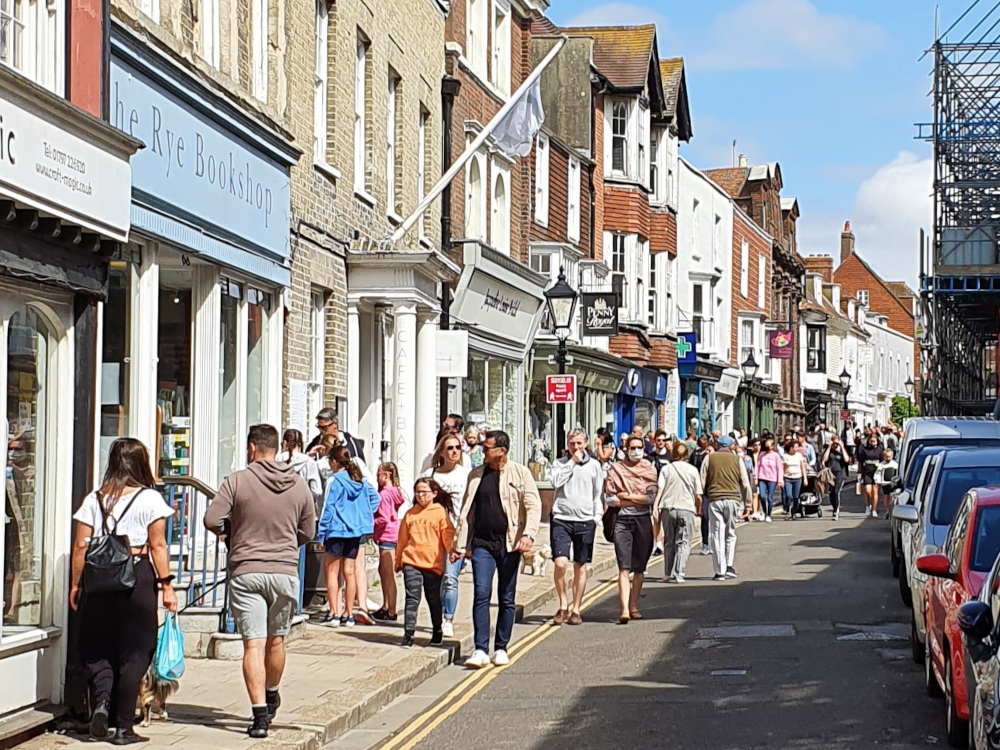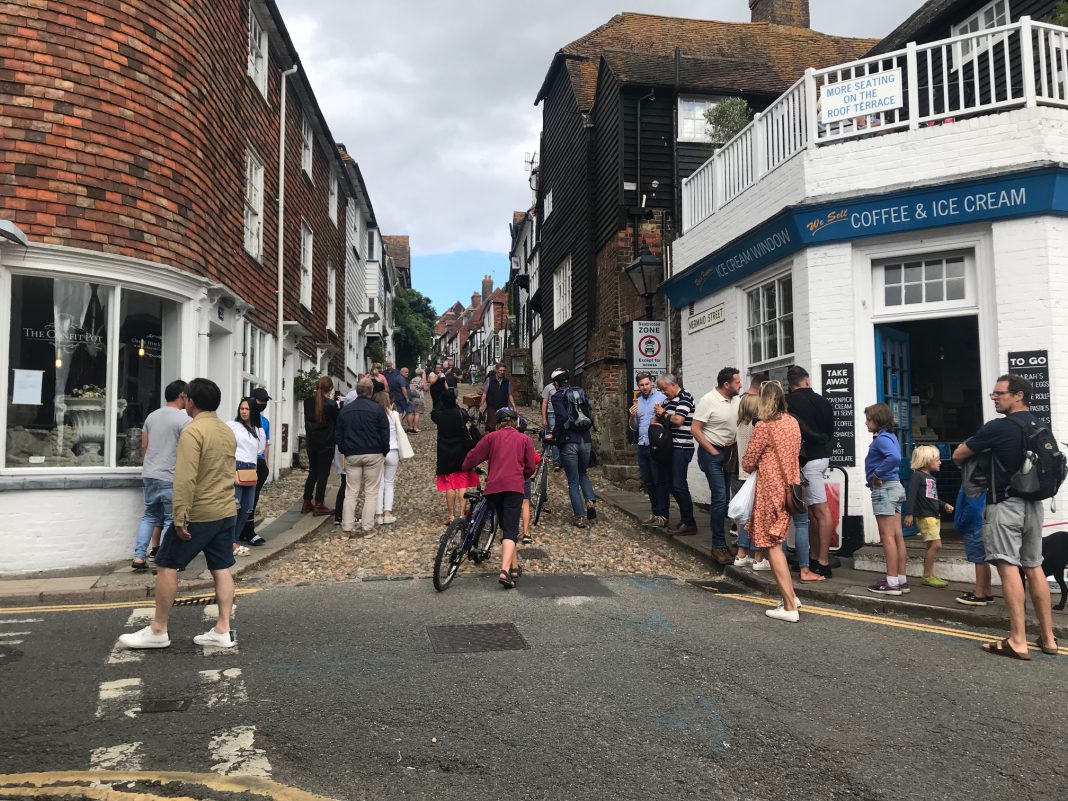During the week, the World Health Organisation said that “it hopes the Covid-19 pandemic will last less [time] than the Spanish flu pandemic of 1918”, which we know lasted for two years and killed tens of millions of people. This is a clear indication that we are in for a long haul.
We can take some short term reassurance that 22 weeks since lockdown, infection numbers in England are reported by the Office of National Statistics to have “levelled off”. In Rother, numbers are described as “stable” and well below the national average at two cases over a seven day rolling average per 100,000. In other places nearby, Folkestone and Hythe is of concern with 14 new cases, but Ashford has had none in recent days.
Further afield, Birmingham is on brink of lockdown, and for those braving foreign travel the UK’s quarantine list (requires 14 day quarantine on return to UK) may expand soon to include Greece, Switzerland and the Czech Republic.

At home, the main talk has been the government’s drive to reopen schools. England’s chief medical officer said that “reopening schools brings less risk of long-term harm than keeping children at home”.
One aspect of the reopening has been a call for more clarity and flexibility over guidance for face coverings, particularly for older children (over 12). Government advice (since 25 August) is that secondary pupils in local lockdown areas of England will have to wear face coverings in school corridors and communal areas. Head teachers in any secondary school will also have the flexibility to introduce face coverings in their schools.
Locally East Sussex County Council provides advice here.
From all that Rye Mutual Aid (RMA) has learnt from its research and the experience of its community support operation, face coverings, if handled properly, are seen as an important mitigation of the risk. In schools they could have an application, particularly when pupils:
- mix in different groups in corridors and communal areas;
- crowd and come into close contact in areas where voices are raised;
- gather in enclosed spaces where there is less effective ventilation.

To reinforce the mitigation of risks the government has just unveiled some new buzzwords. To reinforce the last element, fines for those gathering in groups of 30 or more are increased from this week.
Even with the change of weather, it is possible to see large numbers of visitors to Rye not adhering to social distancing.

Looking to the immediate future and to the direct impacts of the pandemic, there are government expectations of rising employment from October as and when furlough ends. Some of our RMA volunteers suggest that locally there are people just “hanging on” economically. Our call for an outreach centre in Rye and District for social and employment services has so far fallen on deaf ears.
With so much of the NHS focused onto Covid-19, it is possible to get a local doctor video consultation, but a good deal of so called routine NHS treatment is being delayed, and there are now NHS predictions of a build up of longer term treatment waiting times, particular for some cancers, and for surgery such as hip and knee replacements.
This week the New Scientist publication reports on some interesting Covid-19 developments. First, data shows that people in Europe are less likely to die if they get Covid-19 compared with earlier in the pandemic, but the reasons are less clear. Secondly, blood plasma donated by people who have recovered from Covid-19 is being used with some sign of success, as a treatment for the infection. Lastly, in Hong Kong a healthy 33-year-old man is the first person confirmed to have caught the virus twice. As details of the case emerge from the University of Hong Kong, researchers say thoughtfully that “there is still much we do not know about Covid 19.”
Image Credits: Nick Forman , UK Government , Anthony Kimber .




Your photograph in this article demonstrates exactly why the High Street should have been pedestrianised when initially planned – and quickly, before the increase in visitors began.
ESCC has apparently been persuaded by opposition from local businesses and traders to drop the plan.
I fail to understand how it could be seen to benefit trade by having Rye High Street used as a car park rather than a pedestrian only space. We all know that most of the cars are permanently parked leaving no chance of finding a space should you be silly enough to try. I for one have avoided the high street because of the impossibility of social distancing and was hoping for the plan to be implemented so I could feel safe enough to visit again.
I agree with some of the previous comments and perhaps the high street could be closed to traffic during the main part of the day so that there is more space for businesses for eg coffee shops, cafes etc to spill out onto the street and for those walking too making it safer? I know that some towns locally do this and deliveries can be delivered during the evening/night or early morning! My brother has a wholesale fruit business locally and he has keys for several customers particularly in Eastbourne!
I agree. Shut Landgate at 6am and only open again at 11pm with night deliveries if required. Rye should be a walking village without any combustion engines. As you say, keys could be handed to suppliers and deliveries could be collected by residents from the post office collection point. If it works for your brother in Eastbourne it must work in the tiny town of Rye.
Thank you for this interesting article. As way of clarification I would add that Rye College and Community Primary School continue to follow government guidance.
As an English Secondary School, Rye College now has the discretion to require face coverings be worn in communal areas where social distancing cannot be safely maintained. Guidance advises face coverings are not necessary in classrooms because of other mitigating measures in place and the negative impact wearing face coverings could have on communication.
At present, we do not require students to wear face coverings in communal areas however this will be kept under review. This may change if we felt the layout of the premises made it particularly difficult for individuals to maintain social distancing when moving around the school.
If localised restrictions were to be imposed in Rother due to a high transmission rate, in line with government guidance, we would ask for face coverings to be worn when moving around the school.
Current guidance, does not recommend the use of face coverings in nurseries and primary schools such as Rye Community Primary School. This is because children and adults are only mixing in consistent groups in these settings; additionally, misuse may inadvertently increase the risk of transmission and there may also be negative effects on communication and education.
Our planning is kept under regular review in light of government guidance and published on our website. Were the advice to change, our position would adjust accordingly.